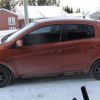
Originally Posted by
Pimp_Daddy_Patty

Not something I'd be terribly concerned with. A good tune, no overheating and potentially some sort of ARP head stud (if HG failure does become a problem). There is a good chance that head gasket failures in the Mirage were a symptom of a larger problem like overheating or detonation, or the cylinder bores on the open deck block shifting (Focus RS has that issue big time).
I've built 14-15 turbo neons and never had an issue, and I'm sure many people know they were supposed to be prone to head gasket failures. Not counting the ones I've built for customers, my own 6 were daily driven for a total of 12 years without any issues.
When it comes to my Ranger, the old school small block Windsor has headgasket issues with boost. This is mainly an issue with the deck thickness of the cylinder head being thin. In this case swapping to an MLS gasket and adding ARP hardware helps with the issue. I'm currently running a graphite gasket and TTY head bolts with no issues at 10psi. Avoiding detonation helps keep it together in this case.
Sounds like fun. But what do you mean by:
MLS gasket
ARP hardware
TTY bolts?
I'm not good with abbreviations. Sorry.
__________________________________________
 View my fuel log 2015 Mirage ES 1.2 manual: 49.6 mpg (US) ... 21.1 km/L ... 4.7 L/100 km ... 59.5 mpg (Imp)
View my fuel log 2015 Mirage ES 1.2 manual: 49.6 mpg (US) ... 21.1 km/L ... 4.7 L/100 km ... 59.5 mpg (Imp)


 2017 Mitsubishi Mirage ES Plus
2017 Mitsubishi Mirage ES Plus

 Reply With Quote
Reply With Quote
 Speck
Speck
 The Pumpkin
The Pumpkin

